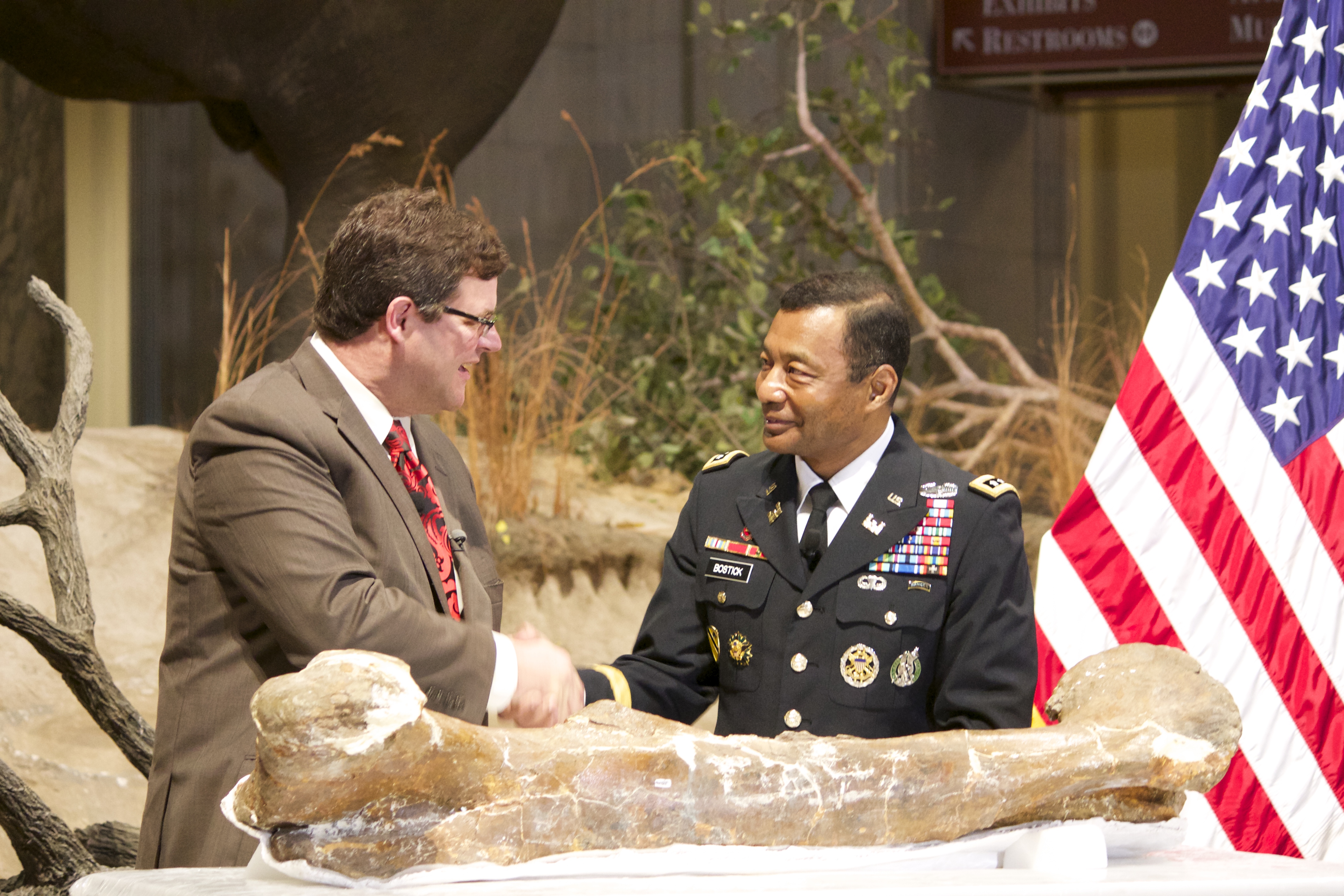WASHINGTON – Twenty-six years after she stumbled upon one of the most complete Tyrannosaurus rex skeletons in the world, Montana rancher Kathy Wankel’s discovery has a new home.
Dubbed the “Nation’s T. rex”’ the dinosaur’s fossils were packaged into 16 wooden crates, which were stacked into a Fed Ex truck that drove 2,000 miles to the doorstep of the Smithsonian Museum of Natural History, where it arrived just before sunrise Tuesday.
The road trip from the Museum of the Rockies in Bozeman, Mont., where the fossils have been housed since excavation in 1989, took only four days, but the wait for the Smithsonian to get its own T. rex stretched, more than a century.
The Smithsonian lost out on a bid for Sue, the Tyrannosaurus rex that towers inside the Field Museum in Chicago, at an auction in 1997. Instead, the museum has featured a life-size replica in its dinosaur hall.
“It’s been 150 years since the Smithsonian opened and we’ve never had a complete T. rex,” said Matthew Carrano, the museum’s curator of dinosauria. ”We’ve had various misses throughout the years. This day, I think, makes up for all of it.”
And it did. More than two dozen video news crews, throngs of reporters and long lines of Jurassic Park fans waited in the pouring rain to catch this glimpse of history.
Museum-goers can see the bones beginning April 15 while staff unpack, catalog and photograph each one. But tourists will have to wait a while before they see it the “Nation’s T. rex” in all its glory – the dinosaur’s skeleton won’t stand tall in the Smithsonian’s new Fossil Hall until 2019.
The skeleton, which is about 85 percent complete, has a similar number of bones as the human body, Carrano said. Big difference, though: the dinosaur has much, much bigger bones and a tail.
Because this particular dinosaur was buried by sediment quickly after it died of unknown causes, the bones were kept preserved and intact, Carrano said.
Kathy Wankel and her husband, Tom, discovered the 66-million-year-old fossils while on a hike near the Ft. Peck Reservoir in Montana. A self-proclaimed “rock hound,” Wankel confessed the sighting was blind luck.
“We just had a jackknife to start scratching with and as she scratched around further, it started to expose some rib bones,” Tom Wankel said as museum staff began unpacking the bones. “And then we knew we were on to something.”
“I was excited about finding a bone, “ Wankel added. “I didn’t plan on a whole dinosaur.”
Because the bones were found on federal land, the Army Corps of Engineers tecnically owns the t.rex, which was displayed in the Bozeman museum before its trip to D.C.
Wankel said she’s honored millions of people will get to see her discovery in Washington, but she hopes that after the 50-year loan to the Smithsonian runs its course, the dinosaur heads back home to Montana.
Until now, the dinosaur was called, simply, the Wankel T. rex.
Text published in conjunction with 
Video published in conjunction with 

